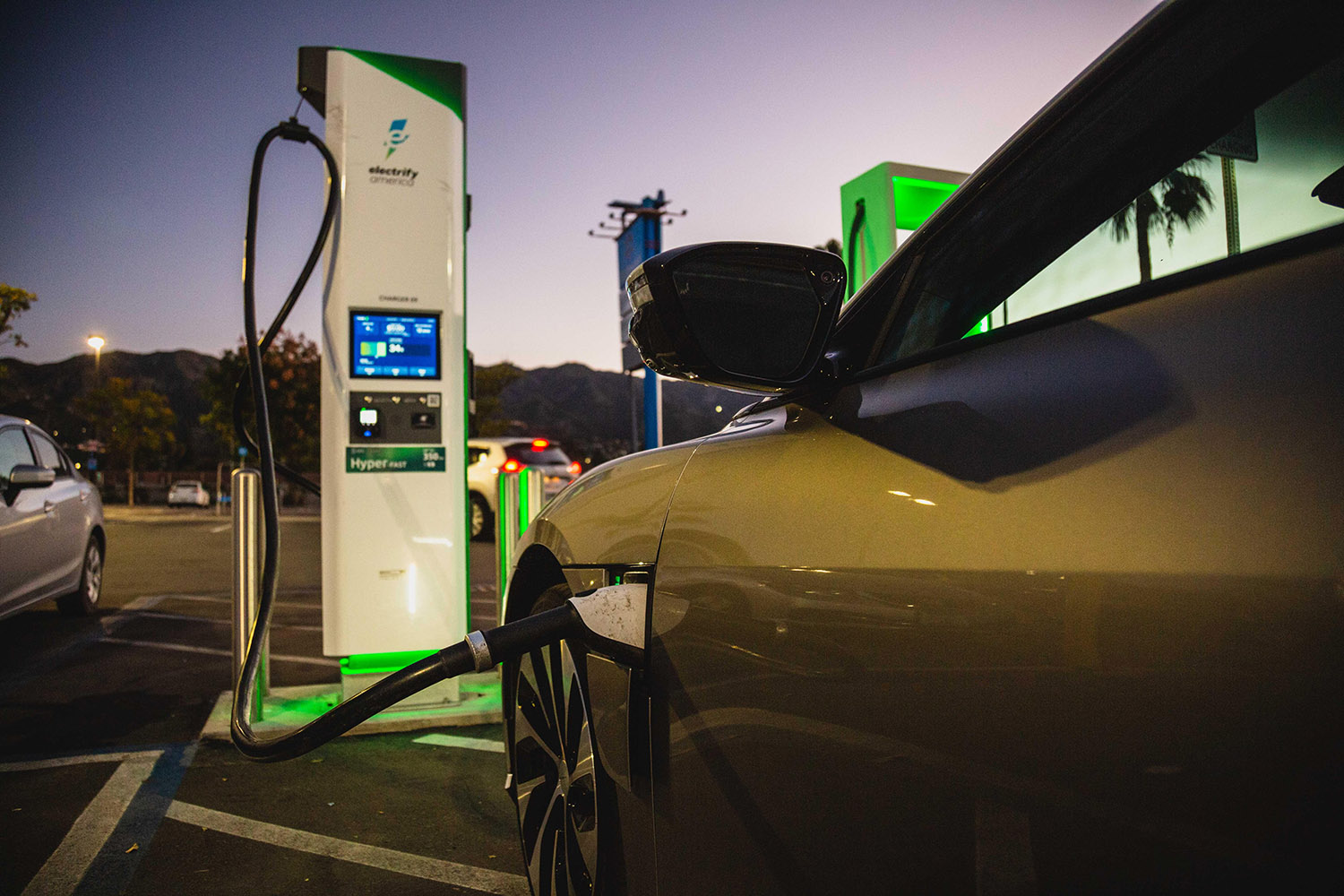An Etiquette Guide to Public EV Charging
If EV charging is new to you, here's our list of polite and helpful habits.
 Manuel Carrillo III | Capital One
Manuel Carrillo III | Capital One
The growing number of electric vehicles on U.S. roads means more drivers may be using public charging stations to recharge those EVs. Just as at gas stations, there's an accepted etiquette to how drivers charge in public. To ensure you never get the side-eye at a charging station, here's our simple guide on what to do…and what not to do.
Charge at home if you can
Sure, public EV charging stations are a necessary (and helpful) part of electric-vehicle infrastructure, but the most convenient charging port can often be the one at home. Install a conventional 120-volt socket or a faster 240-volt Level 2 charging station at your residence, plug your vehicle in, and drive away every morning with a "full tank" (a fully charged battery).
Although it might be tempting to take advantage of the offers some carmakers have made for unlimited free fast charging, it's polite to avoid taking up space at a public fast-charging site when you could charge at home instead. After all, that kind of behavior could create long wait times for drivers on road trips, who have no other charging option to fill up their batteries. Until the U.S. has enough fast-charging sites that no driver has to wait in line, consider doing your charging at home if or when you can.
Public EV charging stations aren't free parking
Not every public charging station has a sign saying, "For Use by EVs While Charging Only," but that's still the accepted etiquette. Don't pull into a station, park, then walk away. After all, you wouldn't drive into a gas station, park at the pump, then walk away for three hours, would you? Same principle.
Use phone apps to know when to move your car after it's charged
Once you've plugged in, you'll be told if there's a time limit at that station—some DC fast-charging stations stop after 30 minutes, others when the car's battery reaches 80% charge—and you should move your car as soon as it's done charging. One of the great things about an EV is that you can lock the car and walk away while it charges. But it's incumbent upon EV drivers to keep an eye on the progress, which will update live on apps for the car and (if you have it) the charging network. Once the car is fully charged, or the station has ended the session, the app(s) will alert you. That means it's time to promptly return to your vehicle and move it so another driver can use the cable.
Know which side your car's charge port is on
Many gasoline-powered vehicles have an arrow on the gas gauge that points to the side where the gas filler is located. But in general, EVs lack the same symbol to show where the charge-port door is. Make a mental note of whether it's on the left or right and front or rear, and plan to park so the cable reaches without stretching across the entire space. Not only can a stretched cable scratch your car's paint, but it also might impede pedestrians as they attempt to navigate around your vehicle.
Hang the cable back up neatly when you're done charging
Again, the gas station analogy applies: You wouldn't just drop the gasoline hose on the ground after you filled up, right? Accordingly, when your EV is done charging and you disconnect the cable, put it back in the holster and make sure the cable is entirely off the pavement. That helps ensure the next driver is less likely to inadvertently run it over or trip on it.
If a station isn't working properly or is dead, let the charging network know
With all the advances of modern technology, it seems like an EV charging network would immediately know if one of its stations was frozen, dark-screened, or not properly validating users (or any number of other potential issues). Unfortunately, the system isn't perfect, and the network may not be aware of every problem with a charging station. If you find another cable that works at the same site, plug in and start your charging session—and while you wait, call the company to tell them which stations aren't working. When you're done, consider rating your charging session on apps like Plugshare, A Better Route Planner (ABRP), or Chargeway—so other drivers can read the ratings and recent experiences ahead of time and plan more efficiently.
Let other EV drivers know about station problems too
Historically, early EV drivers often looked out for one another. That extended to putting signs on charging stations that weren't working right. Even if you are without the means to write up a sign, anything you can do to alert other drivers to station-related problems can be helpful. Noting the issue in a navigation app like Waze or the charging network's app can also be helpful. Some frustrated EV drivers have even taken to wrapping yellow hazard tape around dead chargers as repair teams may do. It's an elaborate but understandable reaction to locations that can be chronically unreliable or unmaintained.
Written by humans.
Edited by humans.
 John Voelcker
John VoelckerJohn Voelcker is a reporter and analyst covering electric vehicles, auto technology, and energy policy. He has written or edited more than 12,000 articles on low- and zero-emission vehicles and the energy ecosystem around them. His work has appeared in print, online, and radio outlets, and he is frequently quoted as a subject-matter expert. He splits his time between the Catskill Mountains and New York City, and still one day hopes to become an international man of mystery.
Related articles
View more related articles